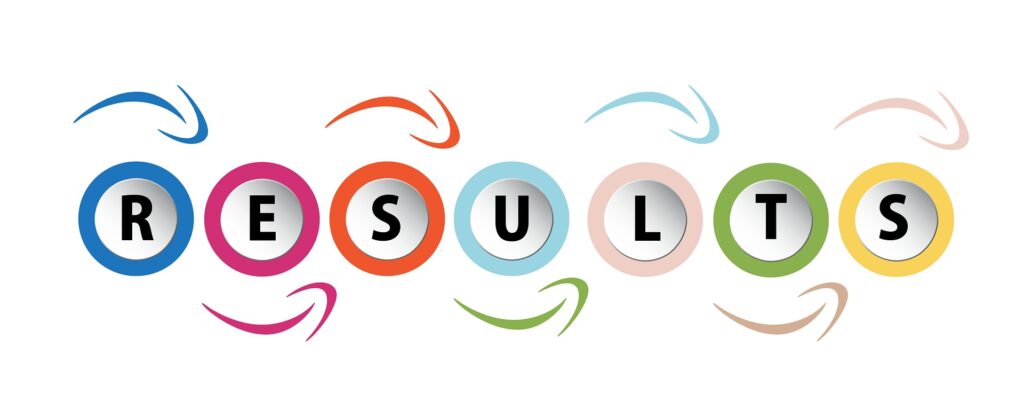The discussion of a scientific paper is the resolution of its story: Everything comes together to shed light on the question that motivated the research. A well-written discussion leaves the reader inspired and satisfied—a noble goal and a difficult one to achieve. If you are struggling to write the discussion of your scientific article, know that you are not alone. Writing an interesting discussion is a craft that few people master. In this post, I tell you what you need to know to make this craft your own.
Before diving into your discussion, you may want to learn about the other sections of a scientific paper. Don’t hesitate to check my Ultimate Guide to Scientific Writing as well as these other posts on the introduction, the materials and methods, and the result section.
The structure of the discussion
The discussion of a scientific article follows a triangular shape. It begins narrowly with a reminder of the niche and a summary of the main findings. The discussion then broadens with the interpretation of the results and a description of their implications, problems, and limitations of the research. Finally, it usually closes with a conclusion highlighting the take-home message. In the following paragraphs, I elaborate on each of these parts.

1. Goal(s) and summary of the main results
Begin your discussion by reminding the reader of the goals of your research and its main findings. Restating the research goals, i.e., the problem it aimed to solve, may seem redundant; after all, you have already described it at length in the introduction. Still, you should begin your discussion with this recap.
Not everyone reads your article from cover to cover. Many readers go straight to the discussion to get the gist of the paper. Your job is to make it easy for them. Besides, even readers who have been with you from the first few sentences of the introduction will appreciate a reminder of the reasons that motivated your research. They’re just coming out of the methods and results sections, and their brains are fogged with details. You need to help them zoom out and see the big picture again.
Once you have reiterated the goals, you should describe your key findings and explain how they deliver on the promises made in the introduction.

Here’s what the first paragraph of the discussion of an article testing a new treatment for dragon pox* might look like (that’s the same imaginary study I used to illustrate my previous posts).
“Dragonpox, the most common disease in children, is usually treated with Aclocyvir. Unfortunately, this drug has significant side effects that lead one-third of patients to interrupt treatment before completion. The research presented in the current article examined the efficacy of a treatment combining Aclocyvir with adeninoside. We compared two groups of patients suffering from dragon pox: one group treated with aclocyvir alone and one treated with aclocyvir combined with adeninoside. We found that patients who received adeninoside reported less nausea, loss of appetite, and diarrhea and were 23 percent more likely to continue treatment to term. As a result, these patients also recovered faster and had fewer complications than the control group who did not receive adeninoside.”
* Dragon Pox is an imaginary disease that affects wizards and witches, like chickenpox (see the Harry Potter series). The symptoms are green and purple rashes and sparks coming out of the nostrils when the patient sneezes.
2. Interpretation of the results
Now that you have summarized your research, you should explain why these results are important and how they fit into the existing literature. By explicitly connecting your results to other important findings, theories, and problems, you help the reader understand the implications of your work.

To achieve this concretely, you can address one or more of the following questions:
- How does your research contribute to solving a current problem?
- How does your research advance an important theory?
- Does your research clarify an important concept or phenomenon? If so, what did you learn about this concept or phenomenon? Why does it matter?
- Did you discover the mechanism of an important phenomenon? How does this mechanism work?
- Did you identify the moderator(s) of an important phenomenon? What are these moderators? Why are they relevant?
- Does your research say something about the world, society, nature, human beings…?
- Does it ask an important new question? What is this question? How can it be answered in the future?
- Have you replicated a well-known phenomenon? Why is this replication important?
- Have you failed to replicate a well-known phenomenon? Why do you think this happened? What implications can you draw from this?
3. Problem resolution
Anyone who has ever done empirical research knows that perfect data only appears once in a blue moon. In real life, scientific studies can go wrong in many different ways. Such as:
- Your methods didn’t work as expected. For example, the questionnaire that you used to measure patients’ appetite doesn’t show good internal reliability in our sample (internal reliability is a statistical value calculated to test the validity of a questionnaire).
- Your results contradict your assumptions, previous findings, or theoretical predictions. For example, you expected that patients treated with adeninoside would have less fever than the control group, but your results do not show any significant difference.
- You realize that there is more than one way to interpret your data. For example, you didn’t give your control group a placebo. Thus, one could argue that patients treated with adeninoside showed an improvement, not because of the drug itself, but because they received two pills (adeninoside + acyclovir) instead of one (acyclovir).
Science is not exempt from life’s messiness! When problems arise during your study – or if a reviewer draws attention to them – you should discuss them.
If the problem is major, such as a serious methodological flaw, you may want to reconsider publishing the data. What is the value of sharing data of questionable validity with the world?
If the problem is minor or raises an interesting discussion, then go ahead: Discuss it! Explain where the problem lies. Don’t sweep it under the rug, but don’t roll in self-depreciation either. Explain why you chose the methodology that you used, provide potential explanations for the problems you encountered, and suggest ways to resolve this issue in the future. Here is an example of how you can do that:
“To measure appetite, we relied on one of the most frequently used scales: the Appetite Inventory (AI). This scale has the advantage of being easy to administer. Besides, previous studies have shown that the Appetite Inventory has good internal validity. However, we did not replicate this result in our sample and found low internal validity. This discrepancy could be due to the fact that our participants were younger than those with whom the scale was originally validated. Since appetite changes with age, especially at puberty, the Appetite Inventory may not be appropriate for school-aged children. Therefore, for the time being, we have decided not to include this scale in our analyses. The development of tailored scales for children would make it possible to study in future studies how the treatment of dragon pox influences their appetite”.

4. Limitations
There are limitations to any research. Limitations are different from problems in the sense that you can anticipate them. Generally, limitations are due to poor representation of the target population (for example, the sample was too small or not diverse enough) or constraints in the practical application of the methods used (for example, the body temperature of different patients was assessed at different times of the day).
Acknowledging your limitations does not mean that you admit having done something wrong. A phenomenon should only be believed once it has been demonstrated using various methods and contexts and once it has been replicated by different research teams. Limitations are inevitable, and discussing them can help put the findings into perspective and emulate new research.
That said, there are some things to keep in mind when addressing the limitations of your research:
- Be specific and particular. Many scientists acknowledge limitations that are not specific to their study but apply to the entire research field. Let’s take our example of the new treatment for dragon pox and imagine that all your patients were recruited from one hospital. This fact limits the conclusions we can draw for the general population. But while it is true that our study should be replicated in other hospitals, such a limitation need not be mentioned in a scientific article. The scientists who read our work are already aware of such weaknesses.
- Keep your section on limitations short. We are so used to being critical of ourselves that we could go on and on about what could have been better in our study. But the truth is that we often don’t really know if another setting would have improved our results. We can only know it if we test it. The discussion is not the place to fantasize about the supposedly perfect experiment you would conduct if you had the opportunity to do it again. The discussion is where you can focus on what you can learn from your research and perhaps mention a few relevant limitations.
5. Conclusion
It is possible to end your article with a conclusion. Some journals expect it, but not all of them. The conclusion is the final hammer to drive your story’s nail into the readers’ minds, a few sentences to remind them of your most important conclusions and their implications. The conclusion is the take-home message.

A few extra tips for writing a great discussion
1. Be particular and specific
This advice is true not only for the limitations but also for the whole discussion. Many authors are far too general in their discussions. They point out vague and generic implications that would apply to dozens of other articles (for example, “This article sheds light on the treatment of dragon pox”). It is much more interesting for the reader to know precisely what the research is about and what can be learned from it.
2. Write your discussion around your results
Some discussions include paragraphs of background information that are not connected to the article’s findings. The discussion is not the place to reiterate the introduction. It should be focused on the discussion of the research results.
3. Emphasize the strengths of your research and its importance
You have done this research for a reason, you wanted to learn about something. Make clear what can be learned from your results.
4. If you are aware of problems in your research, don’t hide them
The reviewers and many of your readers are experts in the field. They won’t be fooled easily, and if you don’t address obvious problems, they will blame you for it.
By taking the lead and confronting these problems, you show honesty and can justify the decisions you have made and the relevance of your results.
That’s it for the discussion! I hope you enjoyed this post. Good luck writing your discussion!
All the best from Austria!
Gaya
Cover image by Background photo created by freepik – www.freepik.com” target=”_blank” rel=”noreferrer noopener”>eJL G from Pixabay; results image by Gerd Altmann from Pixabay; question-solution image by mohamed Hassan from Pixabay; tips image by wiredsmartio from Pixabay
Pingback: How to write the introduction of your scientific paper